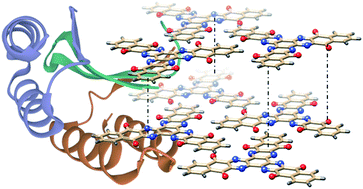Proton-enabled biomimetic stabilization of small-molecule organic cathode in aqueous zinc-ion batteries†
Abstract
Small-molecule organic cathode materials offer flexible structural design features, high capacity and sustainable production. Nonetheless, the stability decrease due to the high solubility of the electrode materials especially under electrochemical cycling conditions limits their wide-range applications in energy storage technologies. We describe a nature-inspired strategy to address cathode stability via introduction of transient vinylogous amide hydrogen bond networks into the small-molecule organic electrode material hexaazatrianthranylene (HATA) embedded quinone (HATAQ). Thanks to the proton-enabled biomimetic mechanism, HATAQ exhibits unparalleled cycling stability, ultra-high capacity and rate capability in aqueous zinc-ion batteries, delivering 492 mA h g−1 at 50 mA g−1 and a reversible capacity of 199 mA h g−1, corresponding to 99% retention at 20 A g−1 after 1000 cycles.



 Please wait while we load your content...
Please wait while we load your content...